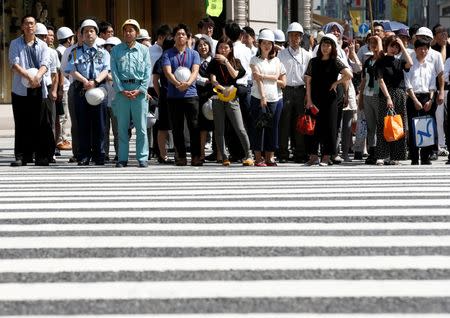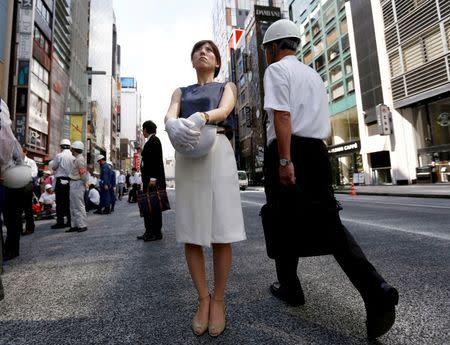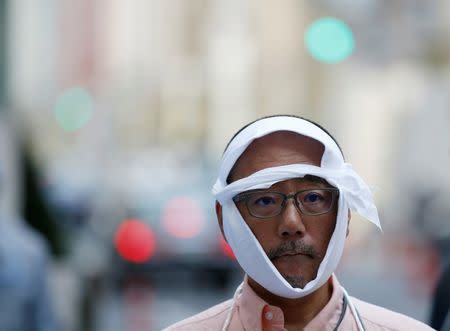Japan holds largest quake drill
Over four thousand people participated in a largest-scale earthquake drill in the center of Tokyo on Friday (August 26), simulating a 7.2 magnitude earthquake hitting the nation's capital. The drill was held in Ginza, a high-end shopping and business district, and held ahead of the 93rd anniversary of the Great Kanto Earthquake of 1923 which claimed at least 100,000 casualties. It was one of the largest natural disasters in recorded history and since 1960, September 1st, and the period around that date has been declared as national disaster prevention awareness period. On Friday, Ginza streets were blocked off as fire trucks raced by, and cranes rose to the help evacuate citizens participating in the drills that also featured fire extinguishing, emergency first-aid, rescue and transporting victims to safe shelters. The drill began with an earthquake alarm sounding throughout the streets and participants crouching down with their hands covering their heads. Some wore helmets. Members of the fire department, police and self-defense forces demonstrated how to carry out emergency first-aid rescue operations while organizing people into groups for effective escape. Some participants said they felt the drill emphasized the importance of keeping calm in the event of an earthquake. "It's about staying calm while evacuating," said Yuji Ida, a 40-year old pastry chef working in Ginza. "Even though today's experience was only a drill, I'm really glad I took part because it is very important to be able to experience something like this at least once." Another said they felt more prepared after the drill. "The biggest thing I took away from today is I learnt the method of how to evacuate in this specific district. I feel more prepared now," said Atsushi Iwatani, a building administrator in Ginza. The drill has been held annually for the past 35 years, with more and more participants taking part each year. The head of Ginza's Disaster Prevention Unit and the organizer of the drill, Ren Mori, said he wanted to keep appealing to people the importance of preparation. "I wanted everyone here to know how best to minimize the amount of damage in the event of an earthquake," said Mori. The government reckons there is a 70 percent chance a magnitude 7 earthquake will hit directly under the nation's capital in the next 30 year. With the current infrastructure, this quake is likely to kill 23,000 people, according to government forecasts, and causing 95 trillion yen (248 billion U.S. dollars) worth in damages to the economy. Earthquakes are common in Japan, one of the world's most seismically active areas, which accounts for a fifth of the world's earthquakes of magnitude 6 or larger. Japan's strongest quake on record was one of magnitude 9 that struck the northeast coast on March 11, 2011, unleashing a massive tsunami and killing nearly 20,000 people, besides setting off the world's worst nuclear crisis since Chernobyl. A magnitude 7.3 earthquake hit southern Japan in April this year, killing at least 49 people and destroying thousands of homes.







